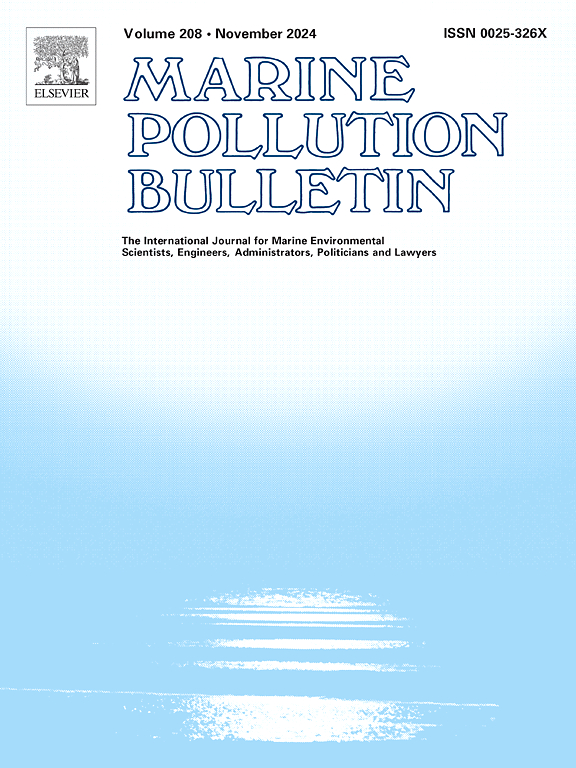Interactions of anthropogenic microfibres with the marine macroalga, Ulvalactuca
IF 5.3
3区 环境科学与生态学
Q1 ENVIRONMENTAL SCIENCES
引用次数: 0
Abstract
Little information exists on the interactions between microfibres (MFs) and marine macroalgae. In this study, the translucent green seaweed,人造微纤维与海洋巨藻Ulvalactuca的相互作用
有关超细纤维(MFs)与海洋大型藻类之间相互作用的信息很少。在这项研究中,半透明绿色海藻乳莼在受控条件下接触了从烘干机棉绒中制备的 ∼2 mg L-1 的微纤维悬浮液,随后对海藻表面和海水中残留的微纤维进行了计数和特征描述。MFs 主要为 2 毫米纤维素,含有纺织品处理过程中使用的各种添加剂和化学品。MFs 与 U. lactuca 的相互作用在空间上是不均匀的,但在对表面上预先存在的 MFs 进行校正后,以干质量和表面积为基础的平均捕获效率分别为 252 mL g-1 和 0.858 mL cm-2。尽管存在这种异质性,但有证据表明,纤维颜色和长度不同,捕集效率也不同。两亲性藻类表面与 MFs 之间的相互作用可能是疏水和静电的,而且不是完全可逆的,被捕获的 MFs 只有 30% 释放到清洁的海水中。与 U. lactuca 的关联对 MFs 在沿海地区的迁移、归宿和生态影响具有影响,并突出了收获的海藻用于生物修复的潜力。
本文章由计算机程序翻译,如有差异,请以英文原文为准。
求助全文
约1分钟内获得全文
求助全文
来源期刊

Marine pollution bulletin
环境科学-海洋与淡水生物学
CiteScore
10.20
自引率
15.50%
发文量
1077
审稿时长
68 days
期刊介绍:
Marine Pollution Bulletin is concerned with the rational use of maritime and marine resources in estuaries, the seas and oceans, as well as with documenting marine pollution and introducing new forms of measurement and analysis. A wide range of topics are discussed as news, comment, reviews and research reports, not only on effluent disposal and pollution control, but also on the management, economic aspects and protection of the marine environment in general.
 求助内容:
求助内容: 应助结果提醒方式:
应助结果提醒方式:


